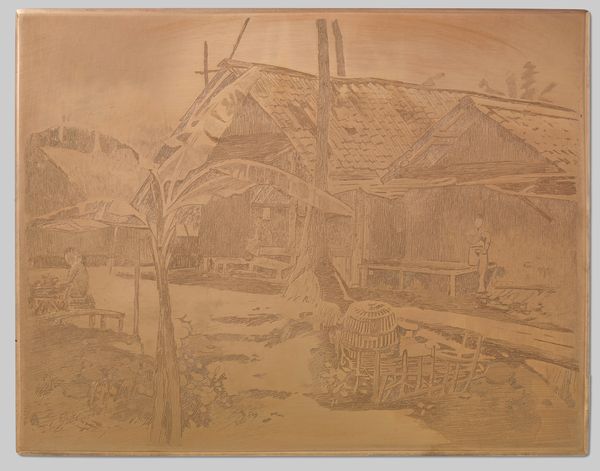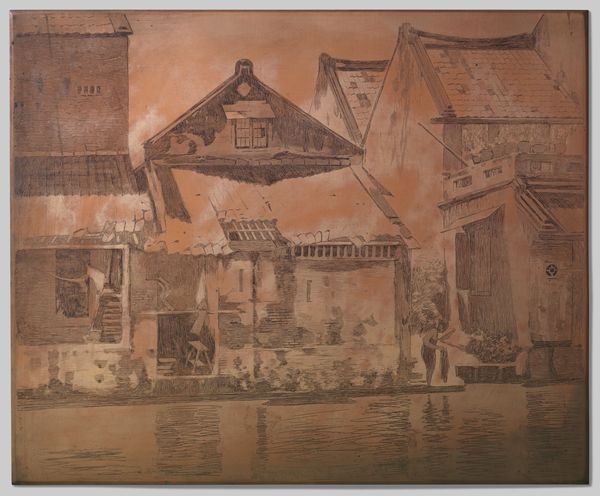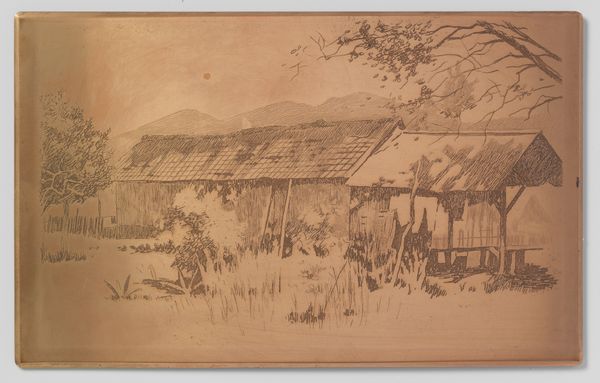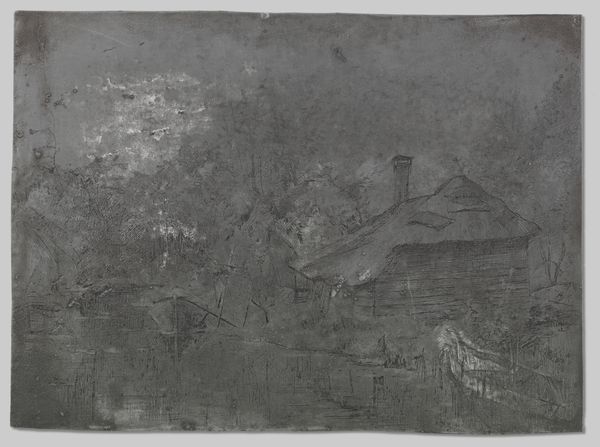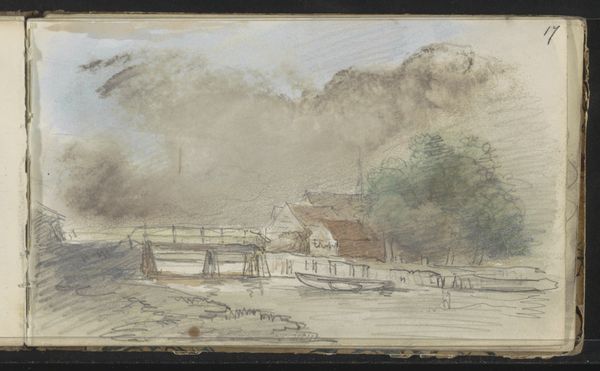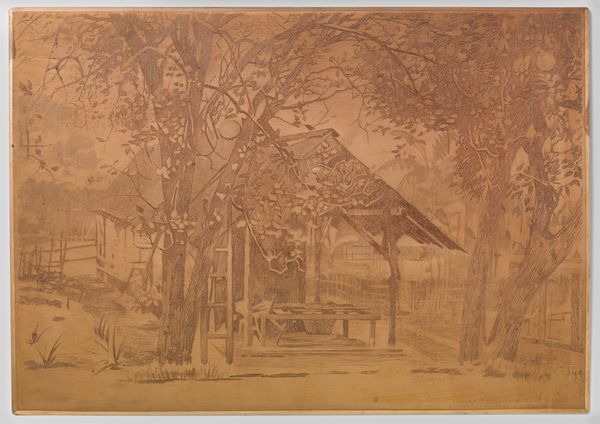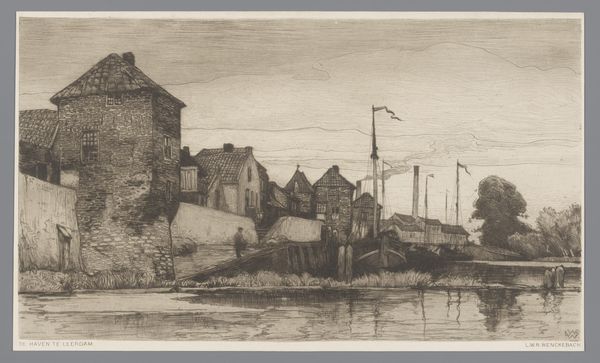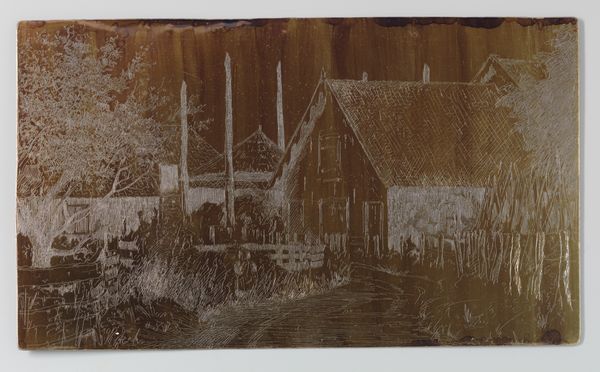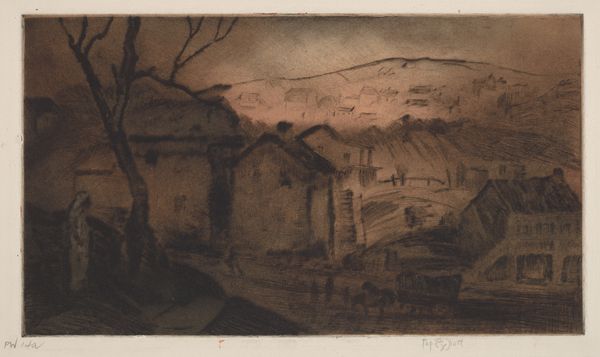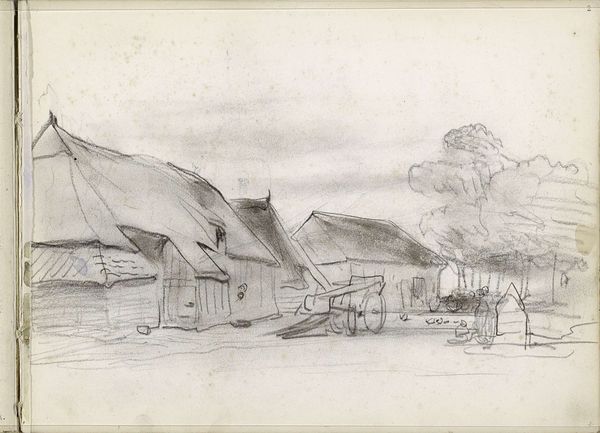
drawing, ink
#
drawing
#
toned paper
#
water colours
#
ink painting
#
asian-art
#
ink
#
earthy tone
#
underpainting
#
cityscape
#
realism
Dimensions: height 501 mm, width 599 mm
Copyright: Rijks Museum: Open Domain
Editor: This drawing, titled "Batavia. huizen aan de kali in gesloten rij," created around 1921 by Willem Witsen, uses ink and watercolors. It feels… hazy, almost dreamlike. What symbols do you see embedded within this scene? Curator: Well, first, the 'kali', or river, functions as more than just a waterway. Rivers have, throughout various cultures, served as symbols of transition, of life flowing onward. Given this image depicts Batavia, now Jakarta, it inherently speaks to Dutch colonial presence. Do you see how the houses, while rendered with some realism, almost seem to fade into the sepia-toned paper? Editor: Yes, the color palette is quite muted. It makes me think of old photographs, or memories. Curator: Exactly! That earthiness might evoke the feeling of something past, perhaps idealized, perhaps not fully grasped or understood. The very act of depicting these homes reflects a specific viewpoint, a way of possessing a space through art. Consider the tightly packed houses - are they conveying a sense of community or constraint? How might Witsen be communicating his personal feelings toward this location through his deliberate choice of imagery? Editor: That’s fascinating. I hadn't considered the possible constraints within the sense of community it initially presented. Now the light reflecting on the water takes on a different meaning. It could represent the future, transition… or even just escape? Curator: Precisely. It is not only representing an image of that community. It’s creating cultural memory. The artist’s choices become embedded, consciously or unconsciously, in our understanding of this place and its history. Editor: This really highlights how art can serve as both documentation and interpretation. I am really left pondering what story he was trying to tell. Curator: And perhaps the most interesting thing about it is that the story is still developing.
Comments
No comments
Be the first to comment and join the conversation on the ultimate creative platform.

